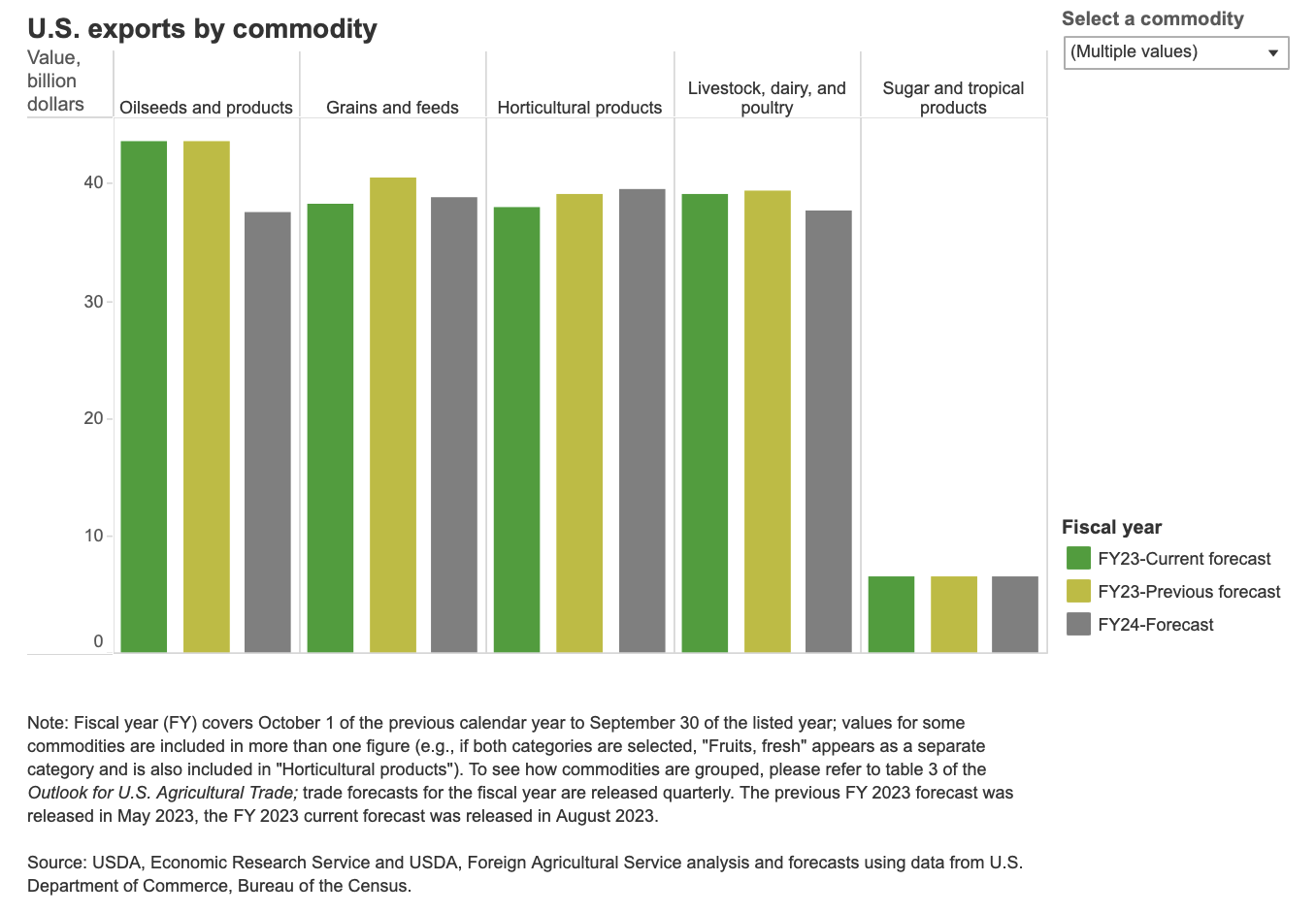$19 Billion Ag Trade Deficit Expected for FY 2023

USDA on Thursday announced it revised projections for U.S. ag trade in fiscal year (FY) 2023 and introduced its forecasts for FY 2024.
Ag trade in FY 2023
USDA lowered expectations for both ag exports and imports in FY 2023. The forecast now finds ag exports will reach $177.5 billion, which is down by $3.5 billion from the May forecast.

Similarly, the department now expects ag imports to reach $196.5 billion, a reduction of $1.5 billion from the previous estimate.

The decline in export projections is due to decreases in corn, wheat and tree nut exports. Changes in imports, however, are linked to relaxed prices throughout the year.
Ag trade in FY 2024
Moving into FY 2024, USDA anticipates further decline in ag exports by $5.5 billion compared to FY 2023, reaching $172.0 billion. The reduction is primarily due to lower exports of soybeans, soybean meal and dairy products.
On the ag import side, USDA projects imports to rise to $199.5 billion in FY 2024, an increase of $3.0 billion from the levels forecast for FY 2023.
Higher expected imports of horticultural and livestock products, along with stabilizing global prices, are influencing the rise in imports.
Based on these projections, USDA anticipates an ag trade deficit of $19.0 billion for FY 2023, up from the $17.0 billion forecasted in May. The preliminary forecast for FY 2024 reveals an ag trade deficit of $27.5 billion.







